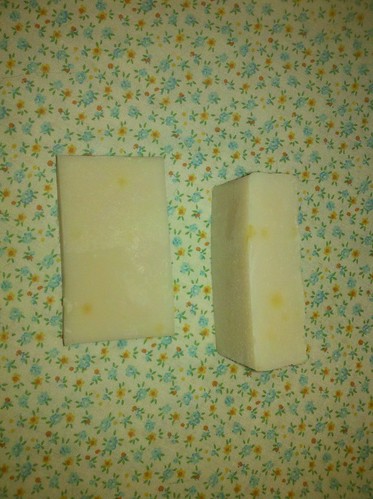Tiffiny Shea
Member
- Joined
- Oct 29, 2011
- Messages
- 10
- Reaction score
- 0
I'm pretty sure I have a terrific case of Dreaded Orange Spot, according to everything I have read on the interweb about this. I made it about three months ago, and it looked good last I looked at it about a month ago.
This was the first batch of soap I ever made, and I was about to go make my second one when I noticed this. So, being a very, very beginner at this I'm not sure what to do about the second batch.
Should I change something with my second try or should I just try, try again?
From what I can tell I there can only be a couple of reasons why this happened:
I live in Denver and it's very dry here and in my house, and the soap was in a dry dark place. It can't be humidity.
I've read that it could be from too high a percentage of superfatting, which is a very new term for me. Should I decrease some of the oils in this recipe? I would have no idea how much or which ones to decrease.
I read that adding Vitamin E can help? If so, I am assuming I'd just add a couple drops or something to my liquid oils?
The soap has been sitting in a cardboard box for the last couple of months... could this have contributed to this?
Here is the recipe:
20oz distilled water
lye 8.75oz
coconut oil 18 oz
crisco 28oz
olive oil 18oz
2 oz fragrance oil
Thanks, anyone who can help!


















































